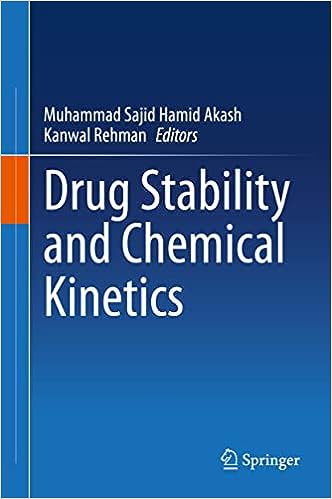A Step-by-Step Guide to Regulatory Requirements for Accelerated Stability Testing
Introduction
Accelerated stability testing is a cornerstone of pharmaceutical development, enabling manufacturers to predict a product’s shelf life in a shorter timeframe. Regulatory agencies such as the FDA, EMA, and WHO provide comprehensive guidelines for conducting these studies under standardized conditions. This step-by-step guide outlines the regulatory requirements for accelerated stability testing, offering insights into best practices, critical parameters, and global compliance strategies.
What Is Accelerated Stability Testing?
Accelerated stability testing involves exposing drug products to elevated temperature and humidity conditions to simulate long-term storage. The primary objectives are
- Predict the shelf life of the product under recommended storage conditions.
- Identify potential degradation pathways and factors affecting stability.
- Support product development and regulatory submissions.
Accelerated testing complements long-term stability studies, providing early insights into product performance.
Step 1: Understand Regulatory Guidelines
Regulatory requirements
for accelerated stability testing align with international standards such as ICH Q1A(R2). Key agencies and their expectations include:- FDA: Emphasizes the use of robust accelerated data to support shelf-life extrapolation for New Drug Applications (NDAs).
- EMA: Requires comprehensive data from accelerated studies to evaluate product quality and stability in the European market.
- WHO: Tailors guidelines to address stability challenges in resource-limited and tropical regions.
Tip: Familiarize yourself with specific requirements for each target market to ensure compliance.
Step 2: Define Testing Conditions
Accelerated stability testing conditions are standardized under ICH guidelines:
- Temperature: 40°C ± 2°C.
- Relative Humidity: 75% RH ± 5% RH.
- Duration: Minimum of six months.
These conditions simulate the effects of long-term storage in a shorter period, providing critical data for shelf-life estimation.
Step 3: Select Testing Parameters
Identify critical quality attributes (CQAs) to evaluate during accelerated stability testing. These typically include:
- Chemical Stability: Potency, assay, and degradation products.
- Physical Stability: Appearance, dissolution, and particle size.
- Microbial Stability: Sterility and preservative efficacy.
Tip: Tailor testing parameters to the specific dosage form and intended use of the product.
Step 4: Prepare Representative Batches
Regulatory guidelines require stability testing to be conducted on at least three primary batches of the product:
- Include both pilot-scale and production-scale batches.
- Ensure that batches represent the final formulation and packaging configuration.
Tip: Use validated manufacturing processes to ensure the reliability of stability data.
Step 5: Conduct Accelerated Stability Studies
Perform stability testing in controlled chambers that meet regulatory specifications:
- Temperature Control: Maintain uniform temperature with minimal fluctuations.
- Humidity Control: Ensure consistent relative humidity levels.
- Sample Placement: Distribute samples evenly to avoid localized temperature and humidity variations.
Tip: Use automated monitoring systems to track environmental conditions and detect deviations in real-time.
Step 6: Monitor and Analyze Data
Collect stability data at predefined intervals (e.g., 0, 1, 3, and 6 months) and analyze trends to evaluate product performance:
- Identify significant changes in CQAs, such as potency loss or increased degradation products.
- Compare results against predefined acceptance criteria.
- Use statistical tools, such as regression analysis, to predict long-term stability.
Tip: Document all observations and deviations for regulatory reporting.
Step 7: Determine Shelf Life
Extrapolate shelf life from accelerated stability data using scientifically justified methods. Consider the following:
- Shelf life should not exceed the duration supported by long-term stability data by more than double.
- Extrapolation must be validated with real-time data from long-term studies.
Tip: Provide a clear scientific rationale for shelf-life determinations in regulatory submissions.
Step 8: Address Packaging and Labeling Requirements
Based on stability findings, evaluate the impact of packaging on product stability and update labeling accordingly:
- Packaging: Use materials that protect against temperature, humidity, and light exposure.
- Labeling: Include specific storage recommendations, such as “Store below 25°C” or “Protect from Moisture.”
Tip: Conduct packaging compatibility studies to ensure optimal protection for the product.
Step 9: Prepare Regulatory Submissions
Compile a comprehensive stability report for submission to regulatory agencies. Include:
- Detailed results from accelerated and long-term studies.
- Scientific justifications for proposed shelf life and storage conditions.
- Evidence of compliance with regulatory guidelines.
Tip: Use standardized templates to streamline submissions across multiple markets.
Challenges in Accelerated Stability Testing
While accelerated stability testing offers significant advantages, it also presents challenges:
- Data Extrapolation: Predicting long-term stability from accelerated data requires careful validation.
- Equipment Maintenance: Stability chambers must be regularly calibrated and maintained to ensure consistent conditions.
- Regulatory Variability: Differences in regional requirements may complicate global submissions.
Tip: Engage with regulatory consultants to address region-specific requirements effectively.
Emerging Trends in Accelerated Stability Testing
Technological advancements are reshaping accelerated stability testing practices:
- Predictive Modeling: Machine learning tools predict stability trends, reducing reliance on physical testing.
- Automation: Robotic systems streamline sample handling and data collection.
- Digital Systems: Electronic data management systems enhance accuracy and regulatory compliance.
Conclusion
Accelerated stability testing is a vital tool in pharmaceutical development, providing early insights into product performance and supporting regulatory submissions. By adhering to global guidelines, selecting appropriate testing conditions, and leveraging advanced technologies, manufacturers can streamline stability programs and ensure compliance with regulatory expectations. As the pharmaceutical industry evolves, accelerated stability testing will continue to play a pivotal role in delivering high-quality medicines to global markets.
